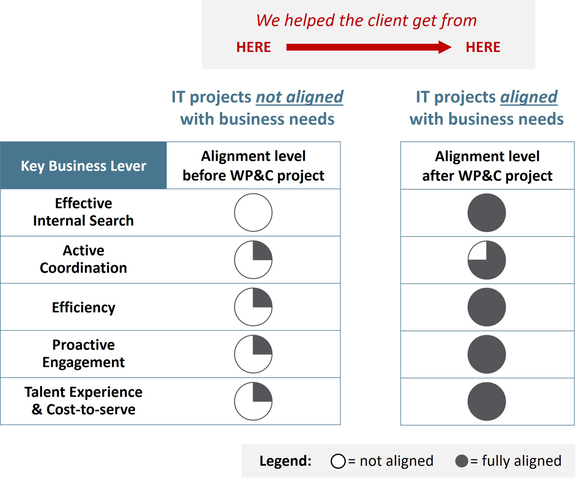Legacy systems prevented the company from integrating new technology and key existing functionality. The company needed a fresh perspective on the functionality and capabilities that would provide them with a future competitive edge, growth, and increased productivity. They also needed help identifying the technology stack, integration approach, implementation phasing, and methodologies to ensure successful front-line user adoption.
1.Identified levers and capabilities to get right across the value chain:
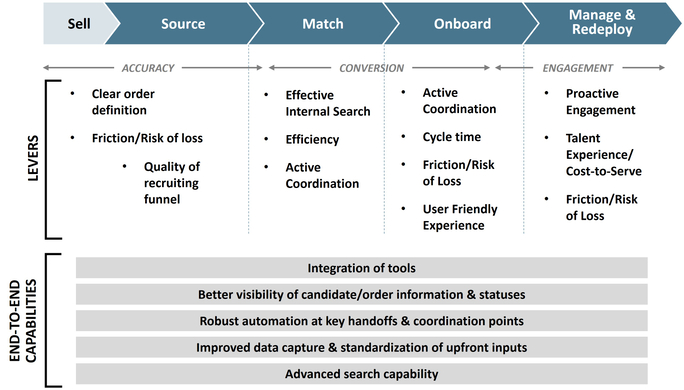
2. Assessed alignment between client’s IT projects and these levers and capabilities:
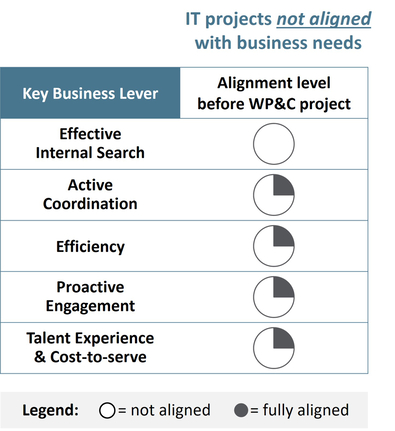
3. Identified root causes of candidate drop-offs and fixes across tech, process, and the organization to increase assignment throughput:
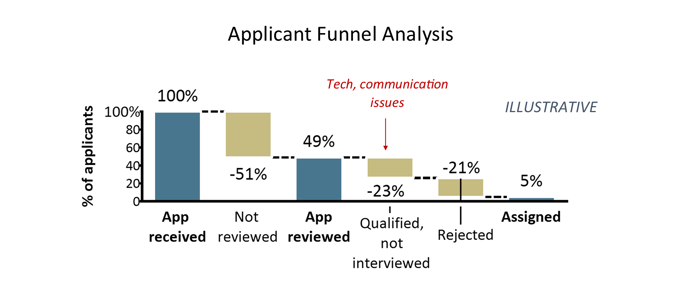
- Developed quick-win opportunities including user-centric training of existing tools, improved inter-departmental handoffs, and fit-for-purpose onboarding with a better candidate experience
- Adjusted investment priorities to create competitive differentiation capabilities for the long run (e.g., self-service data and analytics environment, semantic search)
- Established capabilities critical for the execution of the digital strategy—Biz-IT integration capability; risk management framework; Solutions Engineering
- Sharpened digital strategy—defined what to own vs. buy an alternative approach for developing differentiated middle office capabilities in a manner that would be agile, highly reliable, and cost-effective (using microservices architecture):
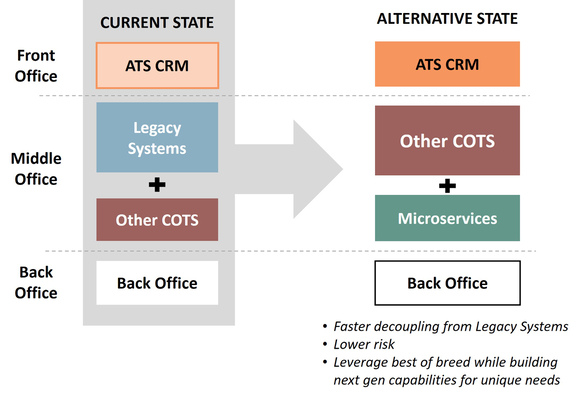
Our successful alignment of IT projects with business needs resulted in both short and long-term benefits.
Short Term:
- 10% expected increase in assignments, revenue, and gross profit
- Improved candidate experience
- Higher redeployment rate
- Internal alignment on projects to prioritize and accelerate vs. pause vs. mitigate risk
Long Term:
- Competitive differentiation protected by key technology investments
- Reduced technology risk
- Lower cost to serve
